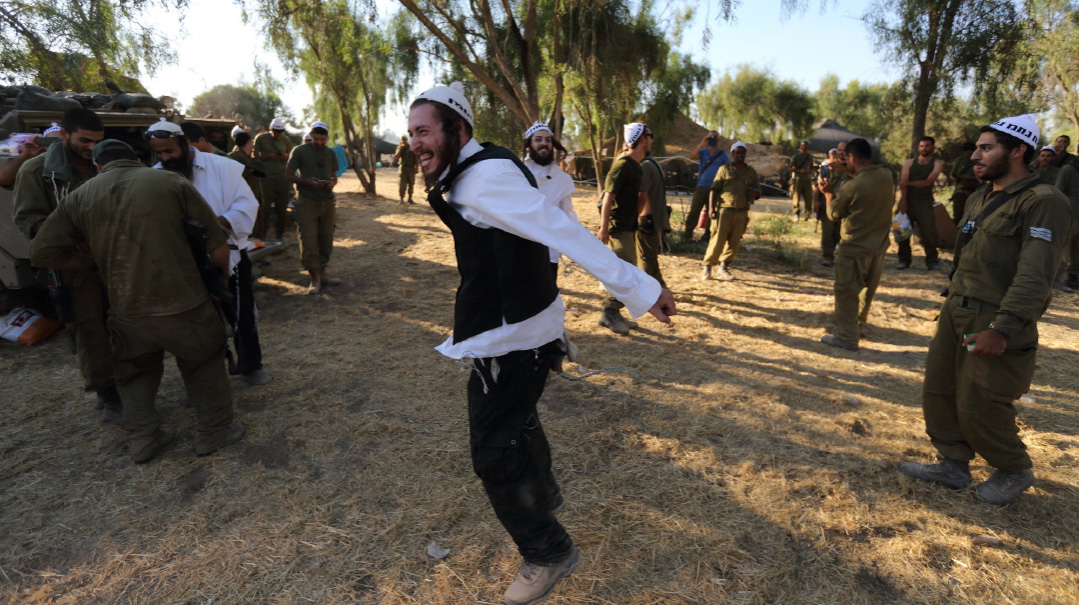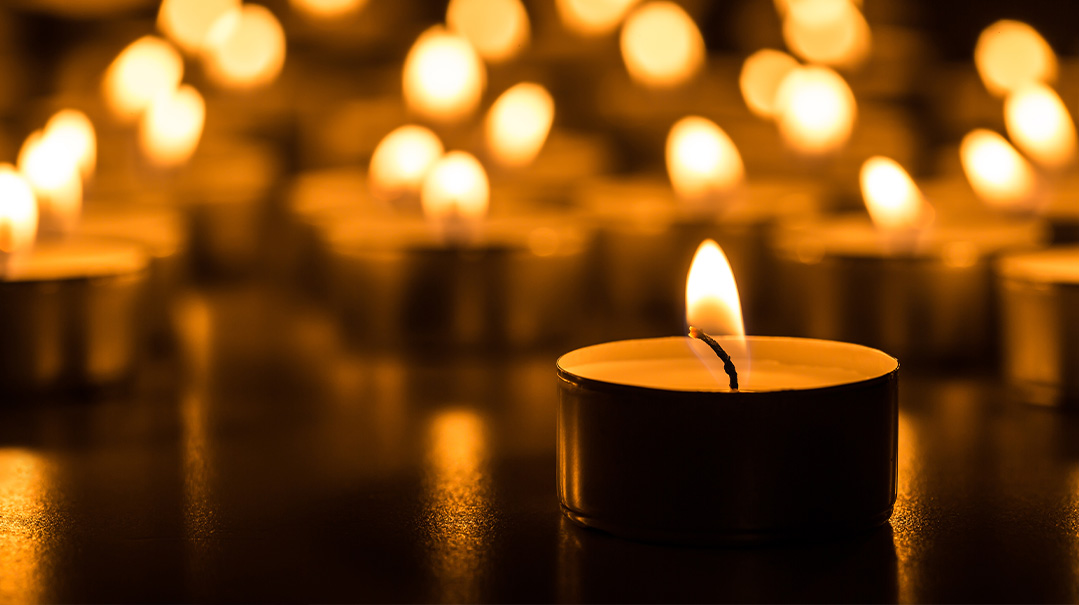No Soul Left Behind

Lessening tensions between Jews and removing stereotypes are positive Torah goals
I’m grateful to my longtime friend and colleague Eytan Kobre for calling attention recently to my long essay in the third issue of Sapir Journal, which is devoted to the topic of ensuring American Jewish continuity. Like any writer, I hope to be read. But as much as I would have liked Mishpacha readers to see the essay, I suspect that my natural reticence would have kept me from mentioning it.
Sapir Journal is, as Rabbi Kobre noted, not an Orthodox journal. That, incidentally, was the principal attraction for me. If one wants to offer prescriptions with respect to Jewish continuity, it is much better to address them to those to whom they apply most directly. If, as per my suggestion, thousands of non-Orthodox Jews suddenly decide to seek out Torah Jews with whom to connect around their shared inheritance of Torah, I’m confident that I will be able to rustle up the requisite manpower in the Torah world on short notice.
The Maimonides Fund, which sponsors the journal, is also not Orthodox, but neither is it affiliated with any denomination. I was far from the only Orthodox writer, though I was the only one described as “Haredi.” And even among the non-Orthodox writers, there were others who argued as well that there is little hope for the Jewish future in America without a dramatic jump in basic Torah literacy. No doubt there were some articles at which I would have bristled, such as one calling for opening the doors wider on conversion. I didn’t read that one, but of those I did read, I found myself nodding enthusiastically at several points.
I never felt that I was there to add a patina of evenhandedness to the volume. I could hardly have been treated more respectfully by Felicia Herman, the managing editor of Sapir Journal and COO of the Maimonides Fund. Not only was she effusive in her praise, she also edited with a very light touch, beyond insisting that I locate the exact sources for all my quotations, and waived my initial word limit by over 1,000 words (a lot).
There were times in the past when I was advised not to participate in forums to which I had been invited — occasionally with an attractive fee attached — because my presence, as someone identified with the chareidi world, was being used to add legitimacy to the discussion. But those have always been intra-Orthodox events.
I’m pretty good at discerning when I’m being subjected to a double standard. I was once invited by the L.A. Federation to a young people’s event — which means it must have been many years ago. The moderator, a CBS newscaster, who grew up in Israel, mentioned all the participants’ academic credentials, except mine. I suspected then, and still do, that he wanted to avoid any signal to the audience that they should pay attention to me, as I had also succeeded in their world.
Felicia, I believe, described me as a “Haredi writer” in her synopsis of the contributions to the volume — just as she referred to Booker Prize winner Howard Jacobson as a “novelist” — either for the benefit of those who might not be familiar with my writing, or to reassure readers that, despite my background, I am credible as a chareidi writer, by virtue of publishing weekly in Mishpacha, the best-selling weekly Torah publication in English.
RABBI KOBRE correctly noted that I stressed that Torah Jews seeking to build deep relationships with Jews currently far removed from Torah should not make their study partners’ becoming fully observant their marker of success. And he put the point exactly as I would have: Doing so turns the secular study partner into an object, a potential notch on the kiruv volunteer’s gun. Deep connections are not formed from such an instrumental approach to the relationship. And the non-Orthodox partner will immediately sense that he is an object to his partner and back away.
Moreover, from a Torah point of view, full mitzvah observance is not the only valid goal. As Rabbi Eliyahu Essas, one of the seminal figures of the Soviet teshuvah movement, once told me, “One cannot engineer the human soul. There are no magic formulas to produce baalei teshuvah — money in, souls out. Each baal teshuvah is a miracle, who exercises his (or her) bechirah to dramatically change his life.”
But lessening tensions between Jews, removing stereotypes, creating friendships on the basis of ahavas Yisrael are themselves positive Torah goals. During the period of ongoing battles over Shabbos traffic on Bar Ilan Street in Jerusalem, the posek hador Rav Yosef Shalom Elyashiv ztz”l, encouraged chareidi activists to meet their secular counterparts to lower tensions and develop relationships, not just to engage in horse trading.
Someone who develops a friendship with a Torah Jew and adds Jewish practices and Torah study to his life is far more likely to produce children for whom religious observance is not something alien and who are more likely to be interested in Torah. If a child starts to become observant, he will encounter far less opposition from a parent who has a close religious friend. In short, we can never know the long-term impact , even in strictly kiruv terms, of developing a close relationship with a nonobservant Jew.
But I should still state for the record, every single chareidi volunteer in Kesher Yehudi — the prime example in my essay — is thrilled with each step of their partners’ growing interest in Torah and mitzvah observance. And there have been hundreds who became fully shomer Shabbos through Kesher Yehudi.
ONE OF THE PERKS of the essay was being interviewed by New York Times columnist Bret Stephens, the editor of Sapir Journal. The last time we spoke at length, I was interviewing him for a Mishpacha profile.
That conversation, conducted through Zoom, went pleasantly enough, until he opened up the floor to the 250 other participants for questions. What was interesting about the questions is that not one addressed the demographic crisis of non-Orthodox American Jewry or my suggestions for what could be done to arrest that decline. Adam Garfinkle, long-time editor of the American Interest, wrote in 2019 that over the next 36 to 54 years, the non-Orthodox segment of American Jewry will shrink to one-fourth to one-third of its current size. And yet the participants’ questions all concerned such hearty perennials as: Why don’t chareidim serve in the army? Why are you preventing egalitarian prayer at the Kotel?
Over the last 25 years, I’ve spent a good deal of my time addressing those issues in print or before groups on non-Orthodox Jews from the States. So nothing that was asked was exactly new for me. And yet I got rattled when the discussion swerved from the issue of continuity. At one point, I launched into a lengthy exposition on how feminism has attained all its goals, without increasing female happiness — that might one day make a decent column, but it did not fit the question-and-answer framework.
But as I reflected on the eagerness of many audience members to lay into the first real-life chareidi in their sights, I recalled a profound insight of David Goldman’s: Churches, like the Church of Scotland, that are rapidly shedding members and nations that are in rapid demographic decline tend to be increasingly anti-Semitic. What bothers them most about the Jews, Goldman speculated, is their eternity and its sharp contrast to the imminent demise of those churches and nations.
Something of the same impulse lies behind the antipathy of many non-Orthodox Jews for chareidim, who continue to expand rapidly, even as the former are disappearing.
ADDENDUM: Last week, Reb Eytan cited one explanation of Rav Chaim Soloveitchik’s well-known opposition to establishing an Orthodox paper to respond to the attacks on traditional Judaism: the impossibility of finding a rav of sufficient stature to take responsibility for the newspaper.
Rav Moshe Meiselman, a great-grandson of Reb Chaim Brisker, in a talk last week, offered a different explanation — which I once heard from Rabbi Moshe Grylak. In that version, Reb Chaim said to the Chofetz Chaim, “Who will write for the paper? Not me. I’m too busy working on my chiddushim and teaching. Not you, with your multiple large-scale projects. That only leaves the leidigayers [layabouts] with time on their hands.”
Which version is the most accurate? I don’t know. Perhaps both are. But it was interesting to hear both within a matter of days.
(Originally featured in Mishpacha, Issue 894. Yonoson Rosenblum may be contacted directly at rosenblum@mishpacha.com)
Oops! We could not locate your form.







